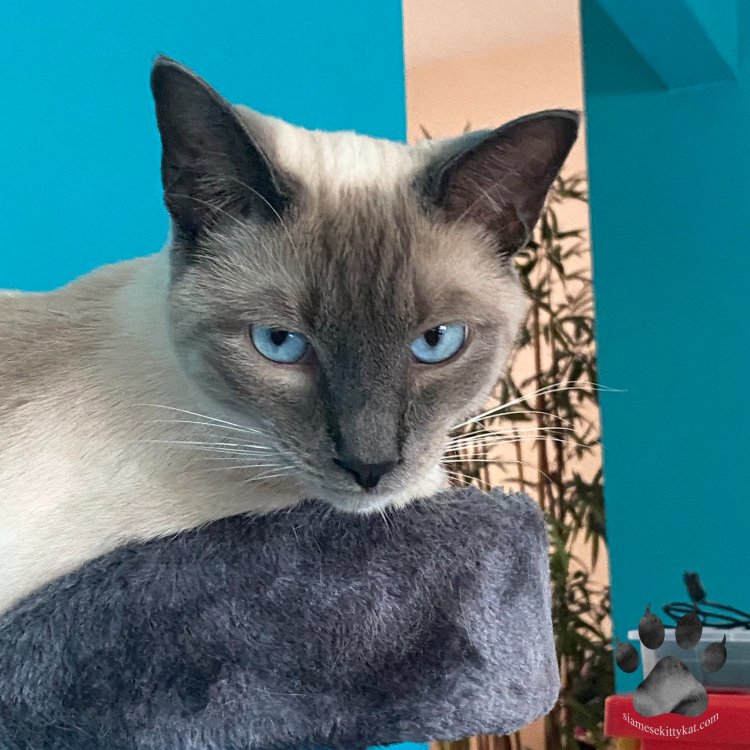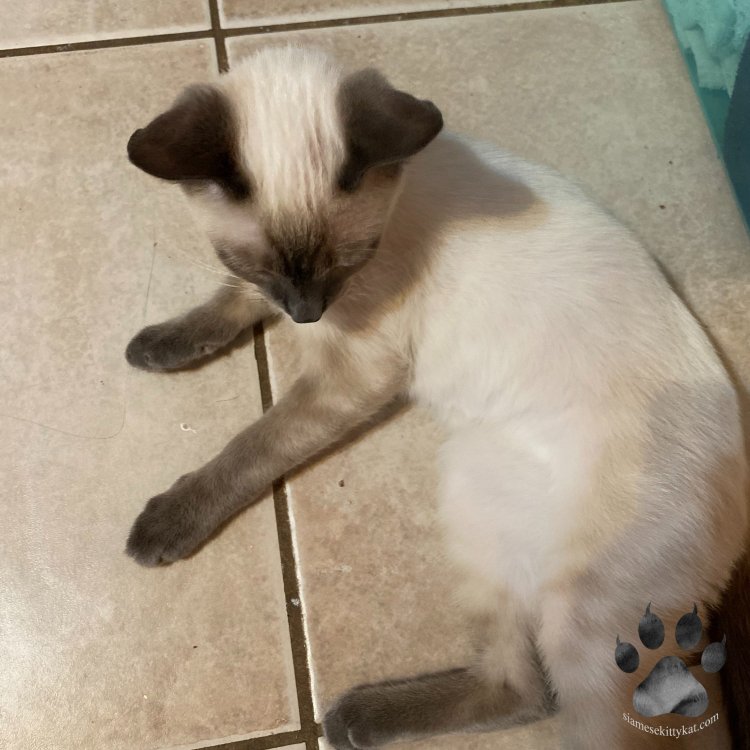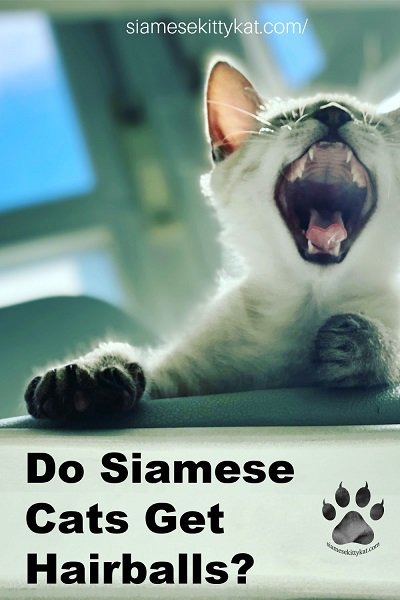Siamese cats do not get hairballs very often because of their sleek, low-shedding coat. In fact, when it does occur, my cats are often surprised! Did that come out of me?
This is another part of the beauty of parenting this mysterious creature. They are very low maintenance – when it comes to grooming at least! (We’ll leave their unique personality aside for the moment).
Do Siamese cats throw up hairballs?
With a Siamese cat, there is no need to clean up thrown up hairballs.
One of the bonuses to having a cat versus a dog is that cats are self-grooming. But their almost obsessive-compulsive bathing routine can lead to the dreaded hairball.
There are all types of beautiful, of course. But the Siamese cat’s particular brand of beauty allows him to avoid the groomer. And the horrible hairball. His low-key personality also makes overgrooming less likely.
How do you know if your cat has a hairball?

You will know if your cat has a hairball if you see somewhat like a ball of yarn – with a disgusting combination of saliva and food. Regurgitated food.
If you’re reading this with breakfast, I apologize.
Hairballs are especially common in long-haired breeds like the Persian or Maine Coone. This is due to their propensity to shed their long, luscious coats in warmer weather.
| Shorthaired Cat Breeds | Longhaired Cat Breeds |
|---|---|
| Sphynx | American Bobtail |
| Siamese | Himalayan Cat |
| American Shorthair | Persian |
| Savannah Cat | Ragamuffin |
| Oriental Cat | Siberian Cat |
| Havana Brown Cat | Turkish Van |
| Russian Blue | Scottish Fold |
Hairballs happen because the barbs on a cat’s tongue collect loose hairs or fur. You don’t need to worry about your cat choking, though. This loose fur passes through her digestive tract without trouble. It then settles in her stomach until it starts to bother her.
Then she’ll make a noise that sounds more frightening than it actually is. And a glob of half-digested fur will emerge along with some other innards. “Ball” might be a misleading term. The narrowness of the cat’s esophagus compacts the hair into more of a tube-like mass as it passes through. This causes the ball to appear more cylindrical than round.
When do cats get hairballs?
The problem with hairballs tends to increase as your cat matures from kitten to adult. This is because an adult cat is much more adept at cleaning himself. Kittens have places to go, toy mice to attack – they don’t have time for a full-fledged bath. So while your Siamese won’t ever completely settle down, his bathing routine intensifies. And with that, so may your cleaning routine.
Vanity is an endearing characteristic of the feline species. So many of us can relate! In humans, it can lead to psychological disorders such as anorexia and bulimia. Research shows that these conditions are the result of insecurity and vanity.
A cat will often exhibit signs of insecurity with overgrooming.

Veterinarians often see these cases after a major life change such as a move or new baby brother – human or animal.
Cats are creatures of habit and do not appreciate having their environment disrupted. They always want to be in control. So they may react by overdoing something they can control – bathing.
Do cats die from hairballs?
This is a very preventable possibility. In severe cases, hairballs can cause intestinal blockages. This can happen with particularly stubborn masses that won’t pass. Due to the stress on her system, this can lead to lethargy, a bloated abdomen, diarrhea, and loss of appetite.
Emergency situations can also occur if the hairball gets lodged in her throat. If enough layers of hair build up in the mass, she may actually need surgery. You can protect your cat – and your pocketbook – with the following suggestions.
How do you prevent hairballs?

As with almost everything, environmental factors play a considerable role in overgrooming.
If there’s a condition affecting a breathing being, there’s an OTC remedy for it. These include:
Brushing your cat is an enjoyable bonding experience for you and your cat. If he enjoys it that is. Get them a slicker brush just like this one from Amazon. This Ruff ‘N Ruffus self-cleaning brush is ideal for removing knots, dander and loose hair from your pet’s fur.
I’ve had cats who react to brushing by drooling in pleasure. One would even push his brush toward me! This was my long-haired Tabby. My current boy shoots daggers at me if I even look at a brush. If you have one like this, visits to the groomer every six weeks or so are in order.
Hairballs are a nasty situation for both you and your cat. They are also very preventable or manageable. With a little tender loving care, a serene home environment, and a preventative diet, your cat will remain comfortable. And there will be less cleaning for both of you!
We gathered all the health tips tailored toward maintaining your Siamese cat’s optimal well-being. Check it out here: Siamese Cat Health: A Complete Guide
Get your FREE Siamese Cat 2024 Printable Calendar


